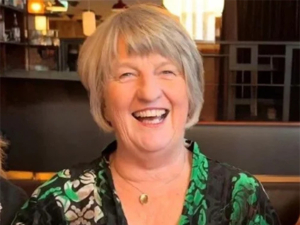SealesWinslow says it has launched an easy-to-use digital decision- making tool that is helping dairy farmers take the guess work out of feeding their herds and use their supplements more efficiently to maximise returns.
The feed company says Ruminix³ is a science- based tool tailored to New Zealand’s pasturebased farming operations. Used by SealesWinslow at no cost to farmers, it compares the effects of feed combinations on milk production based on the variables of each farm’s unique system. Ruminix³ assesses feed options across the board, not just SealesWinslow products.
Using the tool, the company says it has demonstrated that farmers could generate up to 30% more income simply by using the right supplementary feed.
SealesWinslow general manager Grant Jackson says while the payout is looking more buoyant, costs of production are still a challenge, which makes farmers’ feed planning increasingly complex.
“The nature of dairy farming today means farmers will always be looking for more cost-effective ways to put milk in the vat and keep their cows in milk.
“They need a straightforward way to work out how to maximise milk production this season, but also safeguard the profitability of their business long term, so they can capitalise on the more buoyant forecast milk price for the 2024/25 season.”
Instead of making feed purchasing decisions solely based on price, which Jackson says is not always best, dairy farmers can use Ruminix³ to expand their options and reduce risks by predicting the effects of different feed choices before making a purchase.
“These types of tools and calculators can be complex, but that’s the last thing farmers need.”
He says the beauty of their new product is its simplicity. “It is easy to use and coupled with the guiding hands of our team will give farmers confidence the solutions they choose will give them the best bang for their buck.”
Ruminix³ is a ration balancing software programme dedicated to animal nutrition. Using nutrition modelling based on equations from the Cornell Net Carbohydrate and Protein System (CNCPS), it demonstrates the possible return on investment from any feed simply by inputting variables such as kilograms of dry matter (kgDM), metabolisable energy (ME) and starch content.
The CNCPS System is used by nutritionists in New Zealand and is widely accepted as an accurate predictor of milk production in pasturebased systems. An article published in the Journal of Dairy Science in 2013 by authors from DairyNZ and Cornell University arrived at a similar conclusion as a result of a trial conducted in New Zealand.
SealesWinslow has been modelling case studies using Ruminix³.
In July 2023, a 500- cow dairy farm in the South Island producing 1.76kgMS/cow/day feeding 18kgDM from pasture and 3kgDM from PKE, showed a predicted income over feed cost of $54,900/month, at a $6.75/kgMS payout.
If that same farm fed a combination of 18kgDM from pasture and 3kgDM from a high starch, high energy (13.5 MJ/kg) pelletised feed, feed costs increased by 16%. However, milk production increased by 20% and the farm’s predicted income over feed costs jumped to $72,788/month. An income increase, of more than 30% each month.
Grass will always be king. However, Seales- Winslow nutrition & quality manager Paul Drew says seasonal variability in pasture means there will be times throughout an animal’s development when there are seasonal shortfalls between what nutrition they need and what pasture can provide.
He says the company has proven that by investing in better-quality feed with more energy and more starch to fire up a cow’s rumen, the more efficiently she will use their entire feed ration (including pasture) and the more milk she will produce.
Ruminix³ is available now and is being used by the SealesWinslow team via a tablet or laptop to help farmers run scenarios, weigh up their options and support them to make the best decisions. Farmers can view easy to understand reports, which can be customised based on their individual needs.


















